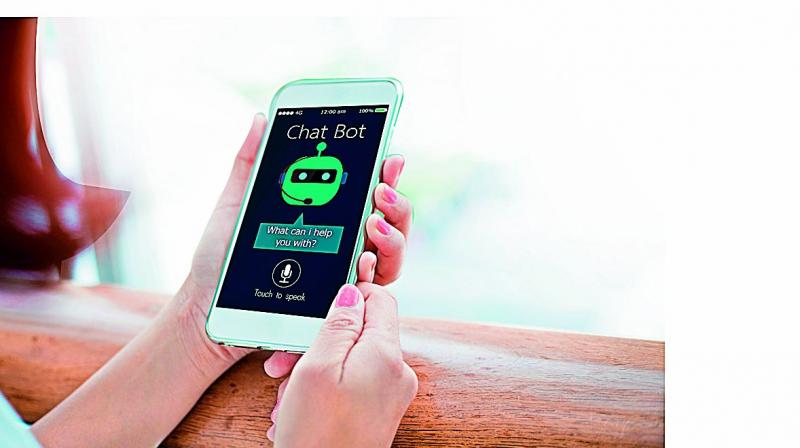Ready with an Answer
Gen X seldom types. They're often seen talking to their machines even for small tasks like googling, texting or setting an alarm.

The human race today is constantly evolving, and technology has been an important disruptive factor in how we conduct business or socialise. Spoken language predates writing by thousands of years. Simply put, a deer or a monkey in a forest is warned of an approaching predator by sound and not by writing, or a child by crying for attention the minute he or she needs something. Communication first started with sound and not words, especially not the written form.
Voice versus writing
Over a period of time, because of evolution of business laws and tenet establishment, writing became important — hence the term such as ‘signed and sealed’ came into normal parlance. Interaction through chat has gained significant adoption in the recent past, as it allows users to have a digital self if they want to. Additionally, chat disengages the need for physical presence and allows one to communicate difficult messages too. Anything that requires broadcasting, therefore, is written or published via pictures in the digital world since it’s an expression of self and interaction of one to many. Comparatively, the interaction via voice is to perform specific tasks or interact to inform typically one on one.
Voice chatbots and assistances gain significance
Voice chatbots and assistants are essential enablers in the digital world bridging the gap between us and the machines. Seeing someone talk into the phone to a virtual assistant is not an uncommon sight; be it mundane tasks of search, reminders, alarms or even calling someone, it adds to the speed and efficiency, over typing. Traversing through truckloads of data that, otherwise, is difficult to navigate, is much easier when a machine does it for you. Besides the reduction of effort and time, and need for multi-tasking is a big charm. Over decades, AI has allowed a vast degree of precision to make actions smoother. Voice recognition and accents is one of the key factors that has allowed this. Voice chatbots and assistants are not limited to basic tasks alone.
Corporate trends today include having a chat assistant to traverse a variety of tasks right from accessing a company’'s financial information, filling out boring forms, helping clients comply with GDPR requirements by automating payroll assistance via machines and more complex things. Even something like choosing one’s pizza toppings for a working lunch can be handled by a virtual assistance.
Setting up a customised virtual assistant
It is important to understand the critical components for setting up a machine to interact as an assistant or guide. One of the important question that arises is, “Why does this activity take place via chat and what is it that the users benefit from?” When it comes to convenience, if a person interacting just wants a job done to extreme customisation, where does the business case lie for this interaction? This means that one needs to decide what all should the machine know. For instance, if a white goods service engineer has a virtual assistant to help fix the product, the machine needs comprehensive learning about the topic.
This is further divided into supervised and unsupervised learning. The data to train on therefore becomes a key criteria for success. Humans interact using natural language, and therefore any physical, digital or virtual interaction would need to be enabled on this. In terms of communication, research indicates that people talk more to a dog icon than any other. Since the speed is of essence or the duration of interaction is important to help narrow down choices, empathy could become critical in such a case.
Mass adoption
This technology is now available freely to a large population at a lower cost, and hence soothsayers predict that the usage would become rampant in the coming years. In our personal life, it is as simple as giving a command to your smartphone or have a business executive supporting customers in a call centre.
The speed, accuracy and purpose resolution of the technology in this case therefore becomes critical for mass adoption. It is evident that the mass adoption of virtual assistants and chatbots is all set to become a way of life, and this is how people will prefer interacting in the future. In light of this, today a majority of businesses across sectors are effectively utilising this technological intervention, so as to simplify and to make lives of employees and customers easy. Would we perhaps have the ability to evolve into super humans is something that we will have to watch out for.

